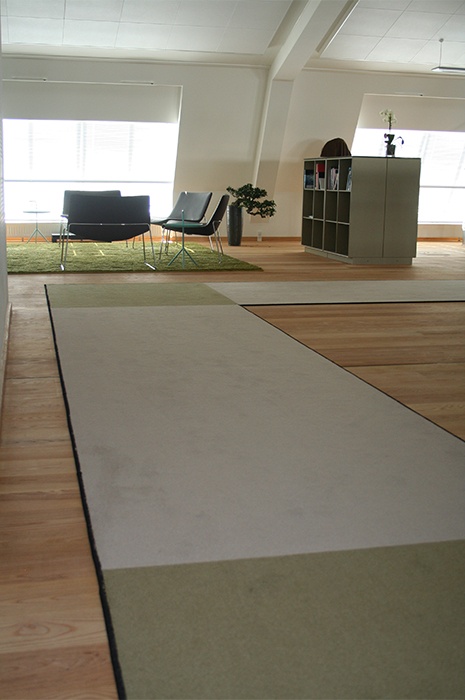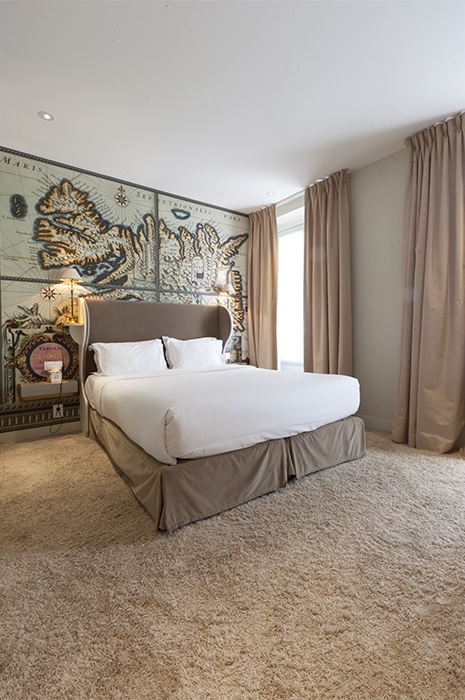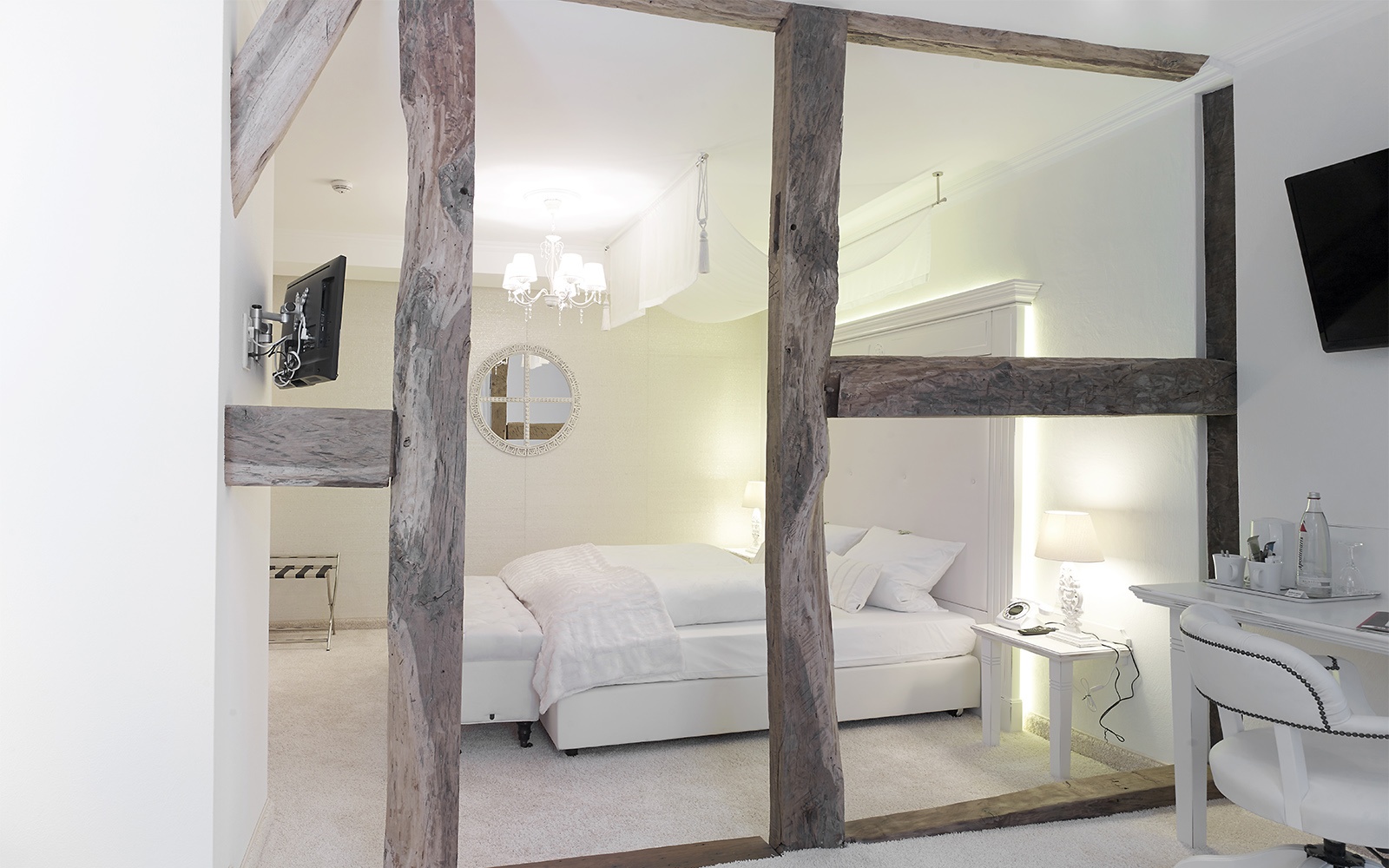This is the sixth chapter of The Architects Guide to Choosing the Right Carpet.
Download the full guide here.
An acoustic carpet is an outstanding sound absorptive material. Indeed, carpet absorbs airborne noise as efficiently as many specialised acoustical materials. This ability to absorb sound and mute noise levels makes acoustics carpets an ideal flooring choice for many applications, from open plan offices to busy restaurants and bars, call centres, auditoriums and multi-level buildings such as apartment blocks and especially hotels where it serves to muffle noise from floor to floor.
Today’s open plan office environments are intended to encourage knowledge sharing, collaboration and flexibility, however, without consideration for a number of elements in the interior design there may be a downside to these open spaces – constant distraction from noise levels being the foremost of these.
A study carried out by the Danish National Institute of Occupational Health¹ indicates that more than half of all employees working in open space office environments are negatively affected by noise. Telephone conversations, footsteps and chairs being pulled back and forth are all sounds that, if ignored in the interior design, may lead to an uncomfortable working environment and negative impact on employees’ ability to concentrate and work productively. Ultimately, this may lead to an increase in absenteeism.

Acoustics should always be a primary concern when designing for working and hospitality environments. Some of the more creative interior designers are even starting to utilize the muffling properties of carpet for tapestry and wall covering when using it for acoustic flooring is not enough or not an option. You can also consider using acoustically optimized carpets for areas requiring extra quiet like reading nooks or lounge areas often used for phone conversations.
You should definitely also consider the paths of traffic in the office and design your acoustic carpet accordingly to counter noise from footsteps. We find that a good way to gain insight is an informal chat with the end users of the site, about who works with whom and which desks, offices or areas are the most visited. Regarding hotels, corridors have traffic 24/7, so carpets here are essential to ensure peace and quiet for the guests who are sleeping and relaxing.
A study carried out by the Danish National Institute of Occupational Health¹ indicates that more than half of all employees working in open space office environments are negatively affected by noise.
Carpets are the complete antithesis of hard, echoing surfaces. Sound waves are absorbed by carpet and the padding used beneath it, and the level of sound absorption from a carpet can be further enhanced by the use of thicker underlay. Some manufacturers even offer an acoustic-optimized carpet backing.
An acoustic carpet is highly effective in controlling noise within buildings or even areas by absorbing airborne sound.
But just how much sound does an acoustic carpet absorb? And how do you make the most of carpet's acoustic properties? Acoustical test programs conducted by the Carpet and Rug Institute showed the following results, which your manufacturer can help you implement in your carpet specification:

In conclusion, carpets are highly effective in controlling noise within buildings or even areas by absorbing airborne sound, reducing surface noise generation and reducing impact sound transmission in multi-storey buildings to rooms below. Properly specified carpet/cushion combinations are proven to be capable of handling the vast majority of sound absorption requirements in indoor environments.
When specifying carpet for areas such as theatres, broadcast studios or open plan offices where sound absorption is critical, be sure to consult your carpet supplier for full details of a carpet’s impact insulation properties and noise absorption characteristics and the best backing and/or underlay to further improve these properties. In our next blogpost, we’ll be discussing other ways in which carpet can affect the tone and feel of specific interior spaces.
When specifying carpets for areas such as hotel corridors, theatres, broadcast studios or open plan offices where sound absorption is critical, be sure to consult your carpet supplier for full details of a carpet’s impact insulation properties and noise absorption characteristics and the best backing and/or underlay to further improve these properties.

1. NFA (previously Arbejdsmiljøinstitutet), “Støj fra menneskelig akitvitet – et udredningsarjbede”, 2006